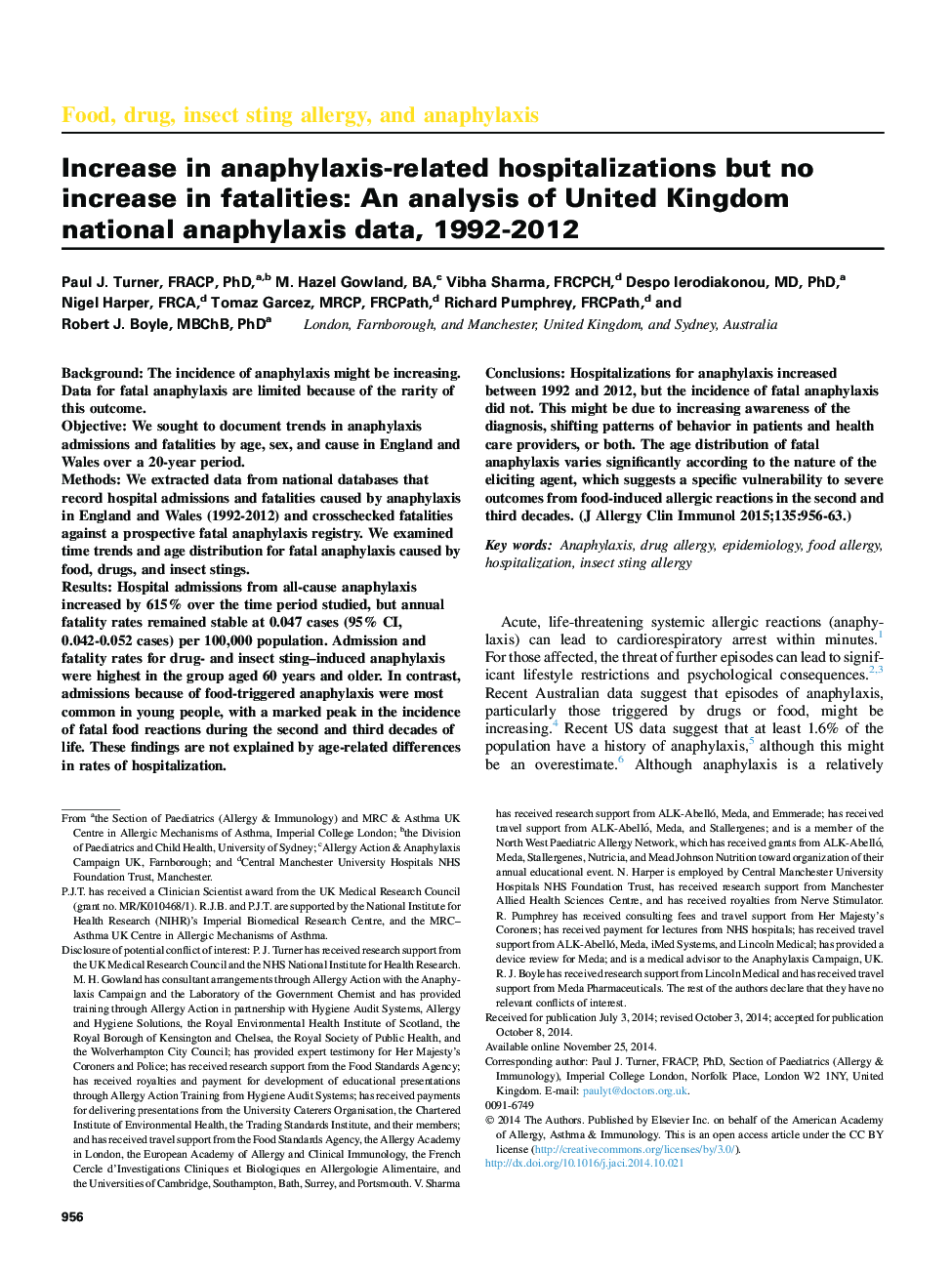| کد مقاله | کد نشریه | سال انتشار | مقاله انگلیسی | نسخه تمام متن |
|---|---|---|---|---|
| 6064084 | 1201858 | 2015 | 9 صفحه PDF | دانلود رایگان |
BackgroundThe incidence of anaphylaxis might be increasing. Data for fatal anaphylaxis are limited because of the rarity of this outcome.ObjectiveWe sought to document trends in anaphylaxis admissions and fatalities by age, sex, and cause in England and Wales over a 20-year period.MethodsWe extracted data from national databases that record hospital admissions and fatalities caused by anaphylaxis in England and Wales (1992-2012) and crosschecked fatalities against a prospective fatal anaphylaxis registry. We examined time trends and age distribution for fatal anaphylaxis caused by food, drugs, and insect stings.ResultsHospital admissions from all-cause anaphylaxis increased by 615% over the time period studied, but annual fatality rates remained stable at 0.047 cases (95% CI, 0.042-0.052 cases) per 100,000 population. Admission and fatality rates for drug- and insect sting-induced anaphylaxis were highest in the group aged 60 years and older. In contrast, admissions because of food-triggered anaphylaxis were most common in young people, with a marked peak in the incidence of fatal food reactions during the second and third decades of life. These findings are not explained by age-related differences in rates of hospitalization.ConclusionsHospitalizations for anaphylaxis increased between 1992 and 2012, but the incidence of fatal anaphylaxis did not. This might be due to increasing awareness of the diagnosis, shifting patterns of behavior in patients and health care providers, or both. The age distribution of fatal anaphylaxis varies significantly according to the nature of the eliciting agent, which suggests a specific vulnerability to severe outcomes from food-induced allergic reactions in the second and third decades.
Journal: Journal of Allergy and Clinical Immunology - Volume 135, Issue 4, April 2015, Pages 956-963.e1
